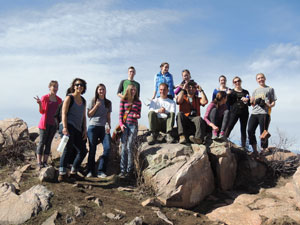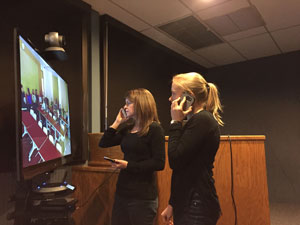
Don Klein
1935-2016

Dr. Donald Klein, a professor who embodied the meaning of the terms ‘academic’ and ‘scholarly’, unfortunately passed away on February 22nd. Don received his B.S. and M.S. degrees from the University of Vermont and his Ph.D. in Microbiology from Penn State. His research interests included a variety of areas in environmental microbiology. Dr. Klein had a long-standing interest in undergraduate teaching, and contributed heavily to the success of our undergraduate teaching mission. He was known internationally as one of three authors on the popular ‘Prescott Harley and Klein Microbiology’ textbook. Don was a member of the American Academy of Microbiology and served on a variety of editorial boards. In his spare time, Don enjoyed reading classic German literature, restoring Jaguar XK150 cars, sculpting mythical animals in stone, and of course sailing on Buzzards Bay, Massachusetts during the summers. Fair winds and a following sea, Don. You will be missed.
Brian Foy's Adventures with Zika Virus Featured on CNN
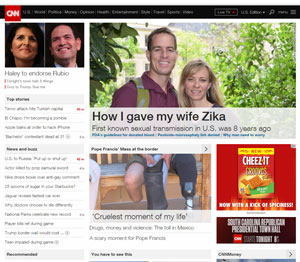
Brian and Joy made the ‘front page’ of CNN.com on February 17th . Rumor has it that the story was receiving 8,000 hits per minute when it ran (which is ‘slightly’ higher than the number of hits the MIPnews receives when it hits the presses…..). Check out the article at: http://www.cnn.com/2016/02/17/health/first-zika-virus-sexual-transmission/
MIP Students Score Big at CVMBS Research Day
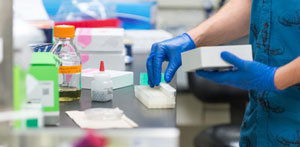
The MIP Dept won the ‘Golden Pipette’ Award at the 17th Annual CVMBS Research Day by achieving the overall highest average presentation score at the event. In addition, the following MIPers took home some well-deserved individual awards:
Mike Mangalea (Brad Borlee – mentor) – 2nd place Oral Presentation
Aimee Ortega (Mark Zabel – mentor) – 1st place Poster Presentation
Jonathan LeCuruex (Gregg Dean – mentor) – 3rd place Poster Presentation
Congratulations to All!
For more info, please click here
SPOT Award
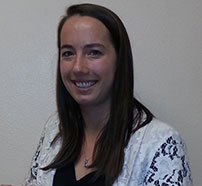
The latest SPOT award recipient is Brooke Plumley, a Research Associate in Dr. Brad Borlee’s laboratory. Brooke was nominated for her strong work ethic, positive attitude & stepping up whenever needed. Congratulations Brooke!
MIP Undergrad Research Featured on CSU's Source
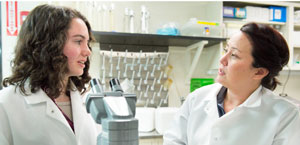
Check out the article on our newly implemented Microbiology Undergrad Research Fellowship Program here: Undergraduate Research Fellowship program
MIP Undergrad Research Pizza Night
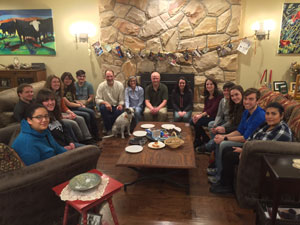
The MIP Undergraduate Research Fellows have begun regular group meetings to enhance the overall experience. Pictured here (left to right) are: Liddy Gordon, McKinzie Smith, Brad Borlee, Jordanna Lesher, Jordanna's roommate (guest), Liddy's roommate (guest), Randy Basaraba, Erica Suchman, Erica’s dog Mia, Alan Schenkel, Cassidy Hagen, Jordan Powers, Jordon Aragon, Erin Markle, Joshua Daum, and Betty Silverman. Not pictured are Undergraduate Research Fellows Denis Iavornic and Joseph Gallegos.

Replication and shedding of MERSCoV in Jamaican fruit bats (Artibeus jamaicensis)
Vincent Munster, Danielle Adney, Neeltje van Doremalen, Vienna Brown, Kerri Miazgowicz, Shauna Milne-Price, Trenton Bushmaker, Rebecca Rosenke, Dana Scott, Ann Hawkinson, Emmie de Wit,
Tony Schountz & Richard A. Bowen
Scientific Reports, Feb 22, 2016 (DOI: 10.1038/srep21878)
Spring Training time is here again, and hope springs eternal among local baseball fans that the Rockies will put it all together this year and bring home that elusive World Series trophy. OK – maybe I exaggerated too much in that first sentence – would you buy “hope springs eternal among local baseball fans that the Rockies will attain a .500 record this season”? Regardless, with baseball in the air, one cannot help but think about ‘bats’ – hence the topic of this month’s publication highlight. Tony Schountz, Dick Bowen and their gang of merry researchers may have ‘hit one out of the park’ with this paper.
The MERS coronavirus (MERS-CoV) is nastier than a Zack Greinke fast ball. It has infected over 1,600 people since it was diagnosed less than four years ago and killed ~30% of patients. While strong evidence has accumulated that camels may be directly responsible for zoonotic transmission of the virus to humans, bats have emerged as great candidates for a natural wild reservoir. However we basically have no clue how MERS coronavirus interacts with a bat during infection. To address this key knowledge gap, Tony and Dick realized quickly that borrowing the Louisville sluggers from the Colorado Rockies would not suffice. Instead, our CSU team of researchers teamed up with NIH researcher Vincent Munster (stationed in Hamilton) and did some controlled infection studies of Jamaican fruit bats – arguably a decent model bat for these studies. Fruit bats, for example, have the DPP4 receptor for MERS-CoV attachment to their cells – so the virus should have no problem gaining access to bat cells and setting up an infection.
The infected bats showed no major signs of disease by histopathology. They did possess rather high amounts of virus in their respiratory tract and showed significant viral shedding from nasal secretions. They also showed fecal shedding of MERS coronavirus, but at a much lower rate than from the respiratory tract. This was somewhat surprising as previous work with bats infected by other viruses showed a higher propensity for fecal shedding. Finally, the bats’ innate immune response – as measured by MX1, ISG56 and RANTES expression – was modest and very transient. In conjunction with this low innate immune response, the bats were essentially all seronegative for antibodies to MERS-CoV.
So why did we pick this paper as our MIPub of the Month© for February? First, we here at the MIP news desk love ‘firsts’ – and this study was indeed the first carefully documented study of a MERS-CoV infection of a bat. Second, this paper is another great example of the synergy MIP department researchers have both within the university (i.e. Dick Bowen is with the BMS Dept) and extramurally Dr. Munster). Finally, the experimental approach in the study uses virological, molecular immunological and pathological approaches. Thus it ‘touches all of the bases’ – and allows us to use one more inane baseball cliché as we count down the days to the Rockies Opener at Coors Field on April 8th.
 MIP Publications February 2016
MIP Publications February 2016
Veselinovic M, Yang KH, Sykes C, Remling-Mulder L, Kashuba AD, Akkina R. Mucosal tissue pharmacokinetics of the integrase inhibitor raltegravir in a humanized mouse model: Implications for HIV pre-exposure prophylaxis. Virology. 2016 Feb;489:173-8.
Misencik MJ, Grubaugh ND, Andreadis TG, Ebel GD, Armstrong PM. Isolation of a Novel Insect-Specific Flavivirus from Culiseta melanura in the Northeastern United States. Vector Borne Zoonotic Dis. 2016 Jan 25. [Epub ahead of print]
Malmberg JL, Garcia T, Dubielzig RR, Ehrhart EJ. Canine and feline retinal lymphoma: a retrospective review of 12 cases. Vet Ophthalmol. 2016 Feb 12. doi: 10.1111/vop.12356.
Saba C, Paoloni M, Mazcko C, Kisseberth W, Burton JH, Smith A, Wilson-Robles H, Allstadt S, Vail D, Henry C, Lana S, Ehrhart EJ, Charles B, Kent M, Lawrence J, Burgess K, Borgatti A, Suter S, Woods P, Gordon I, Vrignaud P, Khanna C, LeBlanc AK. A Comparative Oncology Study of Iniparib Defines Its Pharmacokinetic Profile and Biological Activity in a Naturally-Occurring Canine Cancer Model. PLoS One. 2016 Feb 11;11(2):e0149194. doi: 10.1371/journal.pone.0149194.
Rout ED, Hoon-Hanks LL, Gustafson TL, Ehrhart EJ, MacNeill AL. What is your diagnosis? Clitoral mass in a dog. Vet Clin Pathol. 2016 Jan 15. doi: 10.1111/vcp.12322.
Haley NJ, Siepker C, Hoon-Hanks LL, Mitchell G, Walter WD, Manca M, Monello RJ, Powers JG, Wild MA, Hoover EA, Caughey B, Richt JA. Seeded amplification of chronic wasting disease prions in nasal brushings and recto-anal mucosa associated lymphoid tissues from elk by real time quaking-induced conversion. J Clin Microbiol. 2016 Feb 17. pii: JCM.02700-15.
Gulia-Nuss M, Nuss AB, Meyer JM, Sonenshine DE, Roe RM, Waterhouse RM, Sattelle DB, de la Fuente J, Ribeiro JM, Megy K, Thimmapuram J, Miller JR, Walenz BP, Koren S, Hostetler JB, Thiagarajan M, Joardar VS, Hannick LI, Bidwell S, Hammond MP, Young S, Zeng Q, Abrudan JL, Almeida FC, Ayllón N, Bhide K, Bissinger BW, Bonzon-Kulichenko E, Buckingham SD, Caffrey DR, Caimano MJ, Croset V, Driscoll T, Gilbert D, Gillespie JJ, Giraldo-Calderón GI, Grabowski JM, Jiang D, Khalil SM, Kim D, Kocan KM, Koči J, Kuhn RJ, Kurtti TJ, Lees K, Lang EG, Kennedy RC, Kwon H, Perera R, Qi Y, Radolf JD, Sakamoto JM, Sánchez-Gracia A, Severo MS, Silverman N, Šimo L, Tojo M, Tornador C, Van Zee JP, Vázquez J, Vieira FG, Villar M, Wespiser AR, Yang Y, Zhu J, Arensburger P, Pietrantonio PV, Barker SC, Shao R, Zdobnov EM, Hauser F, Grimmelikhuijzen CJ, Park Y, Rozas J, Benton R, Pedra JH, Nelson DR, Unger MF, Tubio JM, Tu Z, Robertson HM, Shumway M, Sutton G, Wortman JR, Lawson D, Wikel SK, Nene VM, Fraser CM, Collins FH, Birren B, Nelson KE, Caler E, Hill CA. Genomic insights into the Ixodes scapularis tick vector of Lyme disease. Nat Commun. 2016 Feb 9;7:10507. doi: 10.1038/ncomms10507.
Munster VJ, Adney DR, van Doremalen N, Brown VR, Miazgowicz KL, Milne-Price S, Bushmaker T, Rosenke R, Scott D, Hawkinson A, de Wit E, Schountz T, Bowen RA. Replication and shedding of MERS-CoV in Jamaican fruit bats (Artibeus jamaicensis). Sci Rep. 2016 Feb 22;6:21878. doi: 10.1038/srep21878.

Graduate Recruits Treated to a Weekend of Science, Sweat and Beers
Twelve prospective MIP graduate students visited the CSU campus in February; four candidates visited on Friday, February 19th, and eight visited on Friday, Feb 26th. Both groups were given an overview of the Graduate program from Dr. Zabel, received tours of the Foothills facilities, met with the GEC, and met with individual faculty whose research programs were of interest to them. The students who visited on the 26th enjoyed a FAC with faculty and students at the Blind Pig organized by the MIP Graduate Student Organization (MIP-GSO). The MIP-GSO also organized a Saturday hike up to the ‘A’ followed by a brewery tour and lunch at Fort Collins Brewery.
Check out additional recruitment photos here
Vet Diagnostic Lab Recieves Top Network Status

Our CSU Veterinary Diagnostic Laboratory was awarded Level 1 status in the National Animal Health Laboratory Network. This makes our VDL one of only eleven Level 1 labs nationwide. CONGRATULATIONS!
 Bob Ellis featured in 'Science on Tap'
Bob Ellis featured in 'Science on Tap'
MIP’s own Dr. Bob Ellis presented a discussion on“BioSAFE Disease Research and the Benefits to Society” on Monday, Jan. 25 at The Lyric Cinema.
Science on Tap is an organization designed to facilitate communication between those who do science and those who don't. The goal is to make science more approachable for the public and to generate discussion about hot scientific topics and/or local research.
A Little Shop of miPhysics
This year’s Little Shop of Physics event attracted over 8,000 attendees. At the event, Micro undergraduate students enrolled in MIP303 or 400G set up a ‘How we use physics in microbiology’ area which was a big hit with the kids.
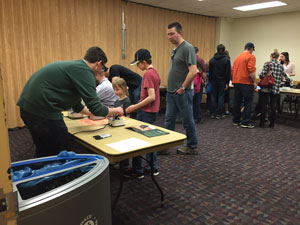
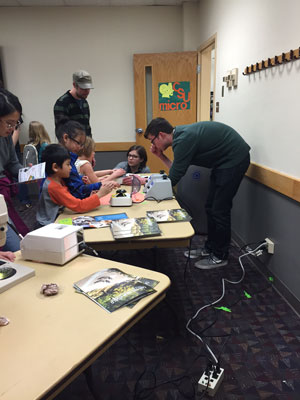
Connor Jackson demonstrating how we use centrifuges to separate blood “aka orange juice” in the Physics in Microbiology exhibit.
See more here
Spring Rocky Mtn ASM Branch Meeting set for April 9th
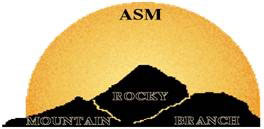
The Spring meeting of the Rocky Mountain Branch of the ASM is set for Saturday, April 9th. The meeting will take place at Metropolitan State University of Denver and will be hosted by our long-time colleague and ASM branch representative Rebecca Ferrell. Three outstanding speakers will be featured at the event: Briana Burton, a bacterial cell biologist from Harvard University, will be the ASM sponsored Distinguished Lecturer. The keynote speaker will be Bob Mclean, a biofilms researcher from Texas State University. Finally, there will be shouldn’t-be-missed presentation from Dr. Jeffrey Beal on how online publishing and other changes at the level of publishers are changing the scientific profession, for better and worse.
The ASM-RMB meeting is a great place for undergraduate, graduate and postdoctoral researchers to present their work in a highly interactive and supportive environment.
For more on the meeting and registration info, click here.
The Olsons and Jim Demartini Go Ape
Ken and Becky Olson, as well as emeritus professor Jim DeMartin,i visited the Bwindi Impenetrable Forest National Park in Kenya last month. Check out some cool pictures of their close encounters with the residents.
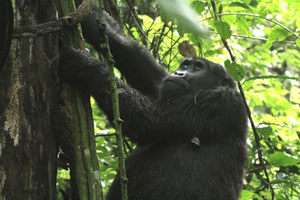
Check out the photos here
Becky and Brooke visit the City that Doesn't Sleep
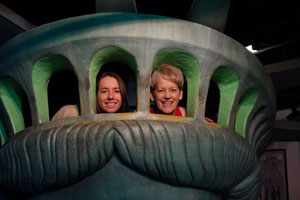
Check out the two huddled masses yearning to be free in the Statue of Liberty’s crown (at Madame Tussauds' Wax Museum in NYC).
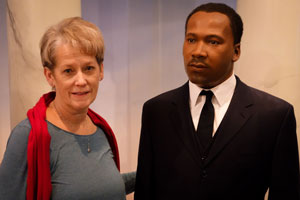
Dr. King had trouble getting a word in during a conversation with Becky Trentlage on the #oscarssowhite controversy (at Madame Tussauds' Wax Museum).
MS-B Students Improving Their Archery Skills
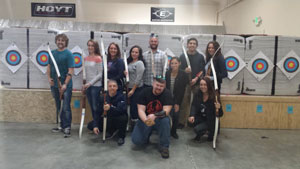
A group of MS-B students took some time off from studying to prove that arrows are not just useful drawing tools for powerpoint slides.
Super Bowl 50 Champions

A look in at the Broncos Super bowl 50 rally at Super Bowl City in San Francisco.
Representing the MS-B Class of 2016 at the Broncos Parade!
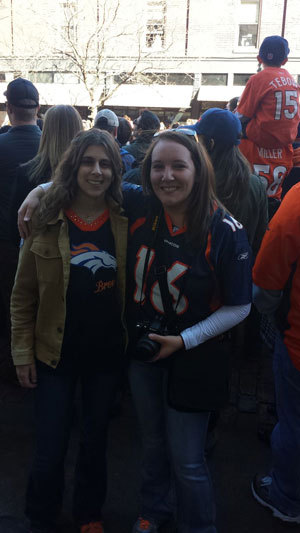
MS-B students Rosie Horst (left) and Christy Martinez (right) show their team pride at the Broncos Parade.
A Look at Super Bowl 50
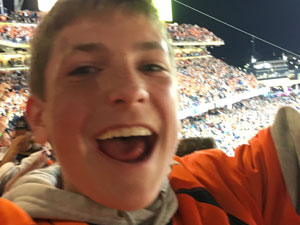
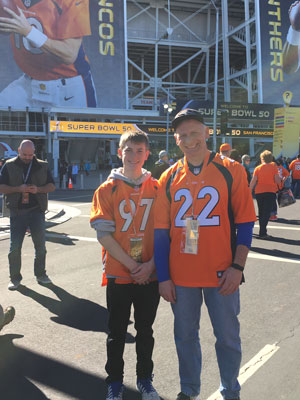
Jeff and Evan Wilusz attended Super Bowl 50 and watched the Broncos become Champions.

![]()
A great accomplishment shouldn't be the end of the road, just the starting point for the next leap forward.
Harvey Mackay –businessman/syndicated columnist
Kristen and Lesley try to work out some video conferencing bugs at a recent seminar
Alternative Captions:
- The first installment of the ‘Verizon is better than Skype’ ad campaign
- “Hello CSU Surplus, how soon can you come to Path and haul off a video conferencing gizmo?”
- Look – not one but two people actually use the phone function on their smartphone!!!
- “Yes, that’s right – we are enforcing our new dress code policy. No black shirt, no admission.”
- Submit your own
![]()
Frustrated that you missed out on submitting your ‘Lab Grammy’ entry this year? Don’t fret, here’s another outlet for your creative, science-oriented ideas. Submit a photo of your original, agar-based art for the chance to win an ASM book and more. Top submissions will be showcased online and in a gallery at ASM Microbe 2016 in Boston, MA, June 16-20, 2016. For complete details, please visit: www.microbeworld.org/art.
Submissions are due May 6, 2016.

![]() Need funding to meeting travel?
Need funding to meeting travel?
Check out this list of ‘Non-NIH Funding Opportunities for Travel Support” at : www.fic.nih.gov
![]() Get ready for new “authentication of research reagent rules’ that are on the horizon
Get ready for new “authentication of research reagent rules’ that are on the horizon
Updated NIH grant application instructions under “Additional Attachments” will now ask the applicant to:
Briefly describe methods to ensure the identity and validity of key biological and/or chemical resources used in the proposed studies.
- Key biological and/or chemical resources may or may not be generated with NIH funds and: 1) may differ from laboratory to laboratory or over time; 2) may have qualities and/or qualifications that could influence the research data; and 3) are integral to the proposed research. These include, but are not limited to, cell lines, specialty chemicals, antibodies, and other biologics
- Standard laboratory reagents that are not expected to vary do not need to be included in the plan. Examples are buffers and other common biologicals or chemicals.
The authentication plan should be included as an additional attachment (not as part of the research strategy), and it should state, in one page or less, how you will authenticate key resources, including the frequency, as needed for your proposed research. The resources that require authentication will vary depending on the reagent/resource and the experimental context in which it will be used. You do not need to provide authentication data itself in this one page attachment; reviewers will be asked to assess the adequacy of the plans you propose for authenticating key resources.
Purchased or established resources may have been authenticated prior to receipt, and the vendor may have included a specification sheet with the product. If the authentication data provided by the vendor meets your needs in terms of how the product will be used, this may be mentioned this in the plan, but you should also include a plan to independently verify the identity and activity of the product before use. If the product will be used long-term, consider the stability of the product and how the validity of the product will be assessed over time.
Key resources developed in-house should also be regularly authenticated and plans to do so should be provided in this section.
The methods used for authentication will depend on the key resource type, and methods may vary by research field. For instance, key cell lines might be authenticated by chromosomal analysis or short tandem repeat (STR) profiling. Key antibodies might be validated by Western blot, ELISA, immunoprecipitation, immunofluorescence, or flow cytometry using knockdown cells and positive and negative controls, depending on the assay proposed. Key chemicals might be validated by liquid or gas chromatography or mass spectrometry. Authentication plans should be based on accepted practices in the applicable field of science.
New Grant Awards
Angelo Izzo, "TO A80 Task D Advanced Small Animal Models for the Testing of Candidate Preventive Intervention Against Mycobacteria", HHS-NIH-NIAID-Allergy & Infect Diseases.
Bradley Borlee, " Adaptation of Pseudomonas aeruginosa in Chronic Infection", Boettcher Foundation.
Delphi Chatterjee, "Modified DNA Aptamer Affinity Reagents for Mtb Biomarker Validation", University of Colorado.
Edward Hoover, "Biomedical Research Training for Veterinarians", HHS-NIH-National Institutes of Health.
Jeffrey and Carol Wilusz, "Post-Transcriptional RNA Regulons in Stem Cells", HHS-NIH-NIAID-Allergy & Infect Diseases.
John Spencer, "Immunological and Molecular Signatures of Leprosy: Tracking Transmission and Disease Progression in Brazil", The New York Community Trust.
John Belisle, "Biology and Biosignatures of Anti-Tuberculosis Treatment Response", HHS-NIH-NIAID-Allergy & Infect Diseases.
Mark Zabel, "Key Molecular Mechanisms of TSEs", HHS-NIH-NIAID-Allergy & Infect Diseases.
Mary Jackson, "MmpL3 Inhibitors Testing ", Global Alliance for TB Drug Development.
| Mon | Tue | Wed | Thur | Fri |
| 1 | 2 |
3 |
4
|
|
| 7
|
8 | 9
|
10 | 11 |
| 14
Spring Recess Begins |
15
|
16 | 17 | 18 |
| 21
|
22 | 23 | 24 | 25 |
| 28 |
29 Graduate Seminar | 30 | 31 |
Do you have NEWS or PICTURES you would like to share?
Send In your ideas or newsworthy items. Contributions make the Newsletter better!
